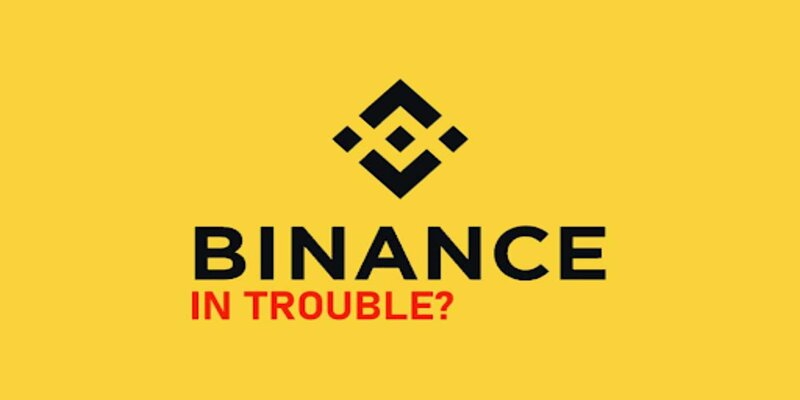Binance Stablecoin Loses $2 Billion In Market Cap
The valuation of Binance’s stablecoin, known as BUSD, fell by two billion dollars in the span of two months, causing crypto holders to feel anxious over their investments.
Since the latter months of 2022, widespread panic, confusion, and mistrust have been directed towards Binance, the largest cryptocurrency exchange. The value of the exchange’s stablecoin has fallen by two billion dollars in just two months, causing holders of cryptocurrencies to feel uneasy as the current panic is being caused by the distribution of false information. The purpose of this article is to dispel any misconceptions regarding the BUSD and the factors that contributed to the currency’s value falling.
When the dominance of stablecoins decreases, this almost often indicates that the market capitalization of other cryptocurrencies, such as non-stablecoins like Bitcoin, Ethereum and other altcoins, are expanding at a rate that is higher than the market capitalization of stablecoins.
The fact that Binance is the largest cryptocurrency exchange in the world, it only makes sense for the BUSD to decrease more dramatically than other stablecoins because crypto users significantly hold a huge amount of BUSD in their cryptocurrency portfolios moving their stables into volatile crypto assets.
About Binance’s stablecoin

Binance USD (BUSD) is a stablecoin that is pegged to the value of the US dollar. It is issued by the Paxos Trust Company and fully backed by US dollars held in reserves. Binance USD is an ERC-20 token that can be traded on the Binance exchange and other platforms that support the ERC-20 standard.
One of the main advantages of BUSD is that it allows users to move funds between different cryptocurrencies without having to convert them to fiat currency first. This can save time and money, as well as reduce the risk of price volatility. BUSD can be used to purchase other cryptocurrencies, pay for goods and services, or as a store of value.
Binance USD is also designed to be a more compliant alternative to other stablecoins, as it is fully regulated by the New York State Department of Financial Services (NYDFS) and is subject to regular audits and inspections to ensure that the funds are fully backed by US dollars.
Binance is one of the most widely used and well-respected cryptocurrency exchanges, and the introduction of BUSD on its platform has helped to increase the stability and utility of the cryptocurrency market.
What’s the big deal about Market Capitalization?

Market capitalization, or “market cap,” is a measure of the total value of a specific cryptocurrency. It is calculated by multiplying the number of coins or tokens in circulation by the current price of each coin or token. Market cap is used to compare the relative size of different cryptocurrencies, and can be used as a rough indicator of a coin or token’s overall value and potential for growth. However, market cap is not always an accurate indicator of a cryptocurrency’s true value and potential, as it can be influenced by factors such as market manipulation, hype, and speculation.
In addition to being used to compare the relative size of different cryptocurrencies, market cap can also be used as an indicator of a cryptocurrency’s overall adoption and usage. Generally, a higher market cap suggests that a cryptocurrency is more widely adopted and used, and that it has a larger user base and more active development. Yet, market cap alone does not indicate the success of a project, and it’s important to consider other factors such as the technology behind the project, the team working on it, the use case, and the adoption of the project.
Therefore, market cap is a commonly used metric in the cryptocurrency space, but one must consider it in conjunction with other factors in order to get a full picture of a cryptocurrency’s true value and potential.
Could Binance’s stablecoin be in danger?

When a cryptocurrency’s market cap significantly decreases, it can be an indication that the value of the coin or token is decreasing. However, market cap can be influenced by many factors, such as market manipulation, hype, and speculation. A decrease in market cap does not necessarily indicate that a cryptocurrency is in danger, but it could be an indication that investors are losing confidence in the coin or token.
The cryptocurrency market is highly volatile and subject to fluctuations, so a decrease in market cap may not necessarily be a long-term trend. Some projects might decrease market cap but still have a strong community, development, adoption and use cases, which can be a sign of a healthy project.
Another noticeable factor is that when the value of cryptocurrencies rises, it is common for investors to flock to volatile assets such as non-stablecoins during a bull run, which can cause the market cap of stablecoins like BUSD to decrease in comparison. This is because during a bull run, investors are often more interested in assets that have the potential for higher returns, and they may be less interested in assets that are designed to maintain a stable value.
The decrease in market cap for stablecoins does not necessarily indicate that the stablecoin is losing value or that there is something wrong with it. It simply reflects the relative value of the stablecoin compared to other cryptocurrencies in the market.
Conclusion
Not all investors have the same risk tolerance, some investors may prefer to keep their value stable and less volatile, and stablecoin can be a good option for them. Additionally, stablecoins can serve a number of different purposes, such as a store of value, a means of payment, and a tool for hedging against volatility in the broader crypto market. Even though their market cap may decrease during a bull run, they still serve a valuable purpose in the ecosystem.
One must evaluate the overall health of a cryptocurrency project before making any investment decisions based on market cap alone. Factors such as the technology behind the project, the team working on it, the use case, and the adoption of the project should also be considered.











